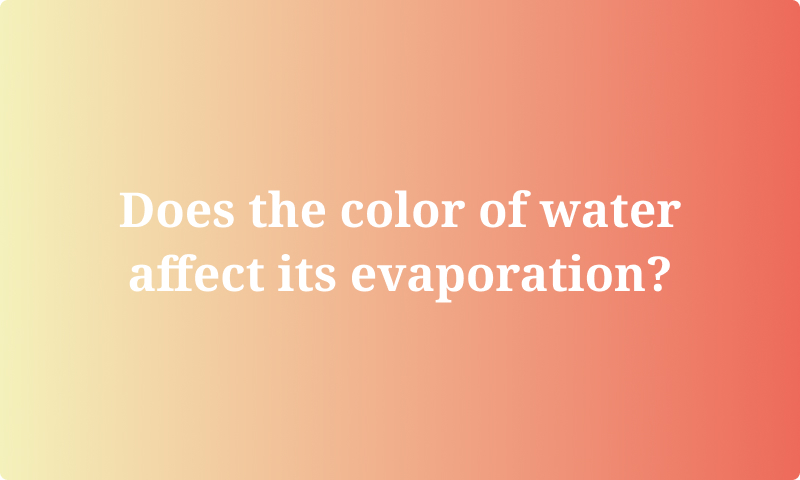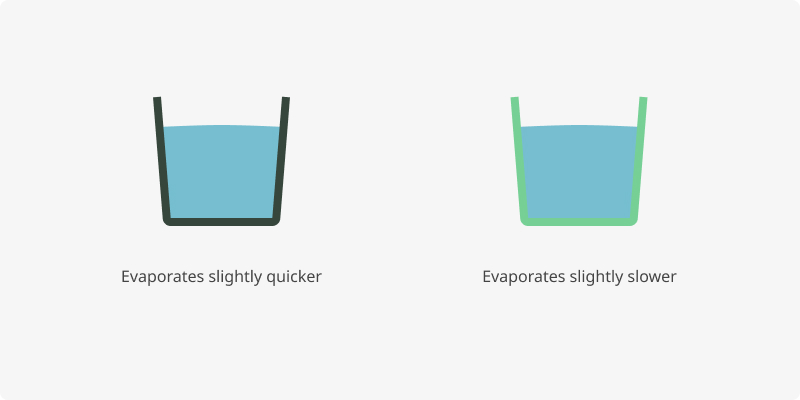
These are all common questions for people interested in color theory, as well as for gardeners and homeowners looking to use color to improve their day-to-day lives.
The short answer
Let's start at the beginning. The most important thing to understand is that water is a colorless liquid. Water often has a blue color in cartoons and games, but that isn't the case in real life.
That means water doesn't really have a color. It may appear so due to the water container, reflection of sunlight, or bottom you can see. In other words, because water doesn't have a color, it does not affect its evaporation.
How surrounding colors indirectly affect water evaporation
The main factors that directly affect water evaporation are temperature, humidity, and the water's surface area.
| High | Low | |
|---|---|---|
| Temperature | More evaporation | Less evaporation |
| Humidity | Less evaporation | More evaporation |
| Surface Area | More evaporation | Less evaporation |
To summarize, a higher temperature at a lower humidity causes water to evaporate quicker than the other way around. Larger bodies of water (surface area) take longer to evaporate, too.

Color plays an indirect role here. For example, water in a dark cup evaporates slightly quicker than in a white (or other bright-colored) cup.
That's because darker colors absorb more colors. Absorbing color means a surface retains heat, which plays into the temperature factor I mentioned earlier.
Real-life examples
So, if you want to decrease the evaporation rate of water in your garden pond, for example, you can use a lighter color for the pond liner. Other factors (temperature, for example) still play the main role, but details like the pond liner color can definitely help.
Another good garden example is the color of your flower pots. Dark-colored flower pots will retain more heat and speed up the evaporation rate of water in the pot's soil.
Summary
That's it for how the color of water plays a role in its evaporation. As it turns out, it plays only an indirect role. Factors like temperature and humidity will have a much bigger impact.
